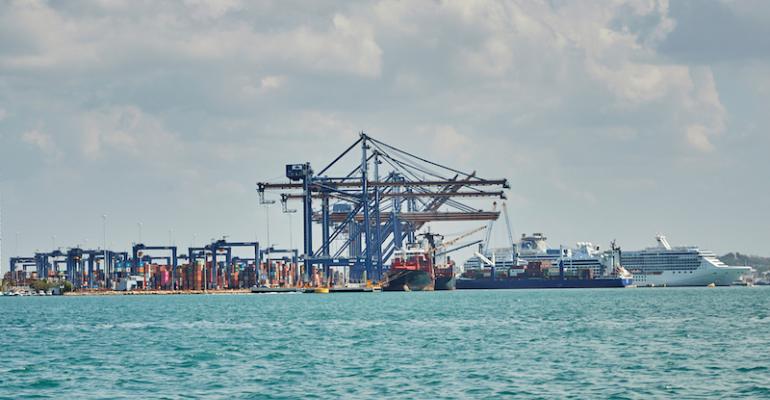Twenty-five years ago it had a quay, which was originally constructed in 1934, and could handle around 200,000 teu annually, with a draft alongside of 10 metres with the largest vessels it could handle was 1,300 teu.
“We had no cranes, no systems and no one would trust us to handle their cargo. But after a lot of fights and making a lot of mistakes, but we now have 5m teu capacity, 15 metres of draft and can handle vessels up to 16,000 teu; and we have customers that trust us,” group marking manager Giovanni Benedetti told delegates at this week’s TOC Americas Container Supply Chain event in Cartagena.
This year Benedetti expects Cartagena to handle 3m teu, and next year he forecasts 3.6m-3.8m teu – which means it is far outperforming many of its regional competitors.
According to Dinesh Sharma, director at Drewry Maritime Advisors, container port throughput volumes across the Latin American region are expected to show a 2% decline in 2019, although they are also expected to rebound with between 3.4% and 4.1% growth in 2020.
“But what is growth? For us it is not just about container volumes – the development of our port is based on being a hub for three pillars: container carriers, freight forwarders and as a location for international distribution centres for multinationals,” Benedetti explained.
He described the less-than-container load (LCL) hub opened by Panalpina in the port around a year ago and which changed the face of transhipment operations Cartagena as a “pretty successful” example of how it was trying to attract forwarders directly.
He added that targeting these three groups with the ambition of securing greater amounts of cargo in and around the port has resulted in the development of three key initiatives.
“The first is to develop what is behind the port in terms of distribution centres and value-added services with the aim of diversifying out revenues but also lowering the cost of moving containers to the port. “It also allows us to ask what is the role of the port in the [cross-border] e-commerce economy and I believe we will be able to begin offering port-to-door e-commerce solutions,” he said.
A second prong of its strategy is to increase the number of port-to-port pairings it has through greater cooperation to make the journey of a container once it leaves Cartagena to the end destination more seamless: “The shipper is still our customer even once its container has left our port,” he said.
The final strategy is to introduce an extended gate concept for its hinterland customers: “Ports and terminal operators should address the last mile a lot more – and our shippers need to think about the port as being at their doorstop, because we are putting a lot of effort into this,” he said.
Copyright © 2024. All rights reserved. Seatrade, a trading name of Informa Markets (UK) Limited. Add Seatrade Maritime News to your Google News feed.


